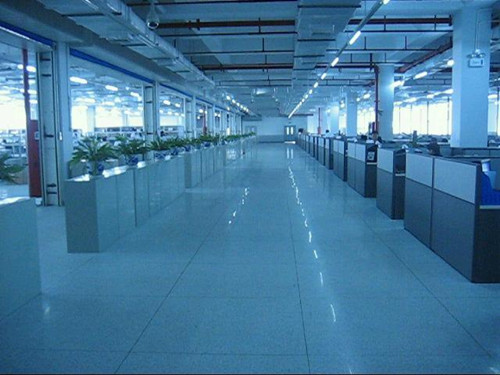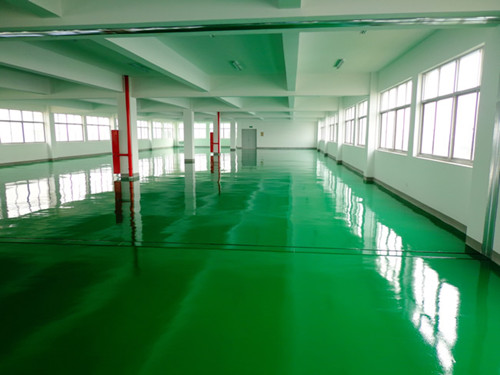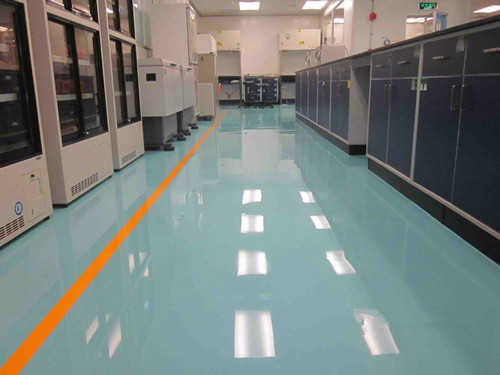Static electricity is easily generated at home and at work, and the greatest cause of static electricity is caused by the friction between the floor and the shoes. Static electricity sometimes causes some damage. Therefore, static electricity is a combination of these reasons. Therefore, static electricity is prevented. The floor was born. Anti-static flooring is generally painted with concrete to paint concrete or concrete floors, and this method will be more and more popularized and promoted, this floor has a beautiful appearance, the overall effect is better, easy to clean and easy maintenance etc. Characteristics, widely used in the electronic field, have extensive use in power plants, warehouses and other places. I believe everyone is not very familiar with the practice of grounding against static electricity . Do not worry, today I will briefly introduce the relevant knowledge of anti-static floor grounding system for everyone. Anti-static floor features 1, anti-static and anti-static lasting 2, high mechanical properties 3, smooth light 4, chemical resistance 5, long service life Anti-static floor classification According to the production process, it can be the following types: 1, ordinary thin coated anti-static floor 2, mortar thin anti-static floor 3, ordinary anti-static self-leveling floor 4, mortar anti-static self-leveling floor Anti-static floor suitable places Electronics, microelectronics, communications, computers, precision instruments, textiles, printing, powders, chemicals, organic solvents, gas, etc. All antistatic needs of the factory's walls, floors and storage tanks. Anti-static floor price Anti-static floor prices range from tens to hundreds of dollars. There are many kinds of anti-static floor, the price is different, and some floors not only have anti-static features, but also some other features, waterproof or wear and so on. When consumers purchase, they must be based on their actual situation. Note: This price is for reference only! Due to geographical differences, of course, the price will be different. For more details on the prices, please refer to the local distributors! Anti-static floor requirements Strength requirements: the compressive strength of fine-grained concrete to be removed from the base must reach 25 Mpa or more, and the bond strength with the coating should be greater than 1.5 MPa Flatness requirements: The flatness of the base layer is checked with a length of 2M, the maximum clearance must not exceed 2MM Moisture content and pH: The moisture content of the base layer should be less than 4%, PH value is less than 9 Surface quality: The base surface should be free of hollows, cracks, potholes, shells and oil Waterproofing: The base layer of the bottom layer of the lower chamber needs to be waterproof and moisture-proof. Anti-cracking treatment: Splitting joints are provided on the floor to prevent excessive temperature, cracks, stress cracking, etc. Anti-static grounding First, the practice of anti-static floor grounding system 1, anti-static floor system components: indoor grounding terminal, outdoor grounding line, grounding network, indoor and outdoor connection devices, grounding and other ground. 2. Anti-static system outdoor setting: Firstly, the outdoor part can be grounded independently. The method of grounding is determined according to the geological conditions. The main method can be unipolar, bipolar, or tripolar. Set the precautions, polar spacing Must be greater than 3 meters, and grounding resistance should not exceed 10 ohms. 3. The grounding resistance shared by the anti-static system can be grounded by such weak points as electrostatic grounding, protective grounding, and work grounding. However, the current limiting resistors are required to be derived separately. These require professional personnel to perform maintenance and settings. It is necessary to verify the settings. Some important resistance and floor system coefficients make important guarantees. 4. The anti-static grounding system can be connected to the building's existing grounding system but it should also be derived separately through various current-limiting resistors and lightning protection sub-sensitive resistors. 5, lightning protection grounding and anti-static grounding system common grounding pole, through special devices, in particular, to prevent lightning varistors, so that it can effectively prevent lightning counterattack. Second, the anti-static floor system acceptance criteria 1, the grasp of time and heat: anti-static system of the indicator test must be one month after construction or when the water content of the floor is less than 10% will be carried out. 2. According to the test method of anti-static system: test the friction on the floor. 3, according to anti-static system for resistance inspection. 4. According to the principles of floor construction and acceptance standards, the inspection of floor appearance and machinery shall be carried out. Editor's summary: The above is the grounding of anti-static grounding practices and acceptance of the relevant knowledge, anti-static floor can be a long time anti-static, but also has mechanical properties, in a timely manner with a chemical corrosion environment can also be used, And the service life is very long. Therefore, anti-static floor will be used in some places that need anti-static electricity. Wall Acceptance Floor Woodworking Acceptance Doors & Windows Acceptance Ground Acceptance Anti-static Flooring Grounding Pharmaceutical Intermediates,Cytidylic Acid 99%Min,White Powder Alareline Acetate,2-Acetylpyrazine 99%Min Henan Tianfu Chemical Co.,Ltd , https://www.tianfuchem.com


Anti-static floor grounding practices and acceptance specifications